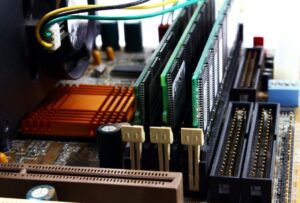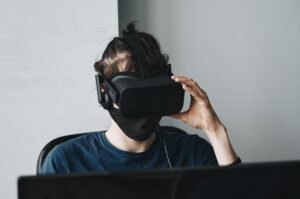Which AI Model Is Best for Stock Prediction?
Artificial Intelligence (AI) has revolutionized many industries, including the stock market. It can analyze vast amounts of data and provide insights that traditional methods may miss. However, with so many AI models available, it can be challenging to determine which one is the best for stock prediction.
Key Takeaways:
- Choosing the right AI model for stock prediction can greatly impact your investment strategy.
- Deep Learning and Reinforcement Learning models are popular choices for stock prediction tasks.
- Evaluating and comparing models based on accuracy, flexibility, and interpretability is essential.
Deep Learning models, such as recurrent neural networks (RNNs) and convolutional neural networks (CNNs), are widely used in stock prediction. RNNs, with their ability to process sequential data, can capture patterns and dependencies in stock prices over time, while CNNs excel at extracting relevant features from input data. *These models have been successful in predicting stock market trends with high accuracy*.
Another popular approach is Reinforcement Learning (RL), where an AI agent learns to optimize its actions based on rewards in a dynamic environment. RL models can adapt to changing market conditions and make decisions accordingly. *Their ability to learn from interactions and continuously improve makes them an interesting choice for stock prediction*.
Comparing AI Models for Stock Prediction
When selecting an AI model for stock prediction, it’s important to consider various factors. Accuracy is a crucial aspect, as a model’s ability to make accurate predictions directly impacts investment decisions. However, flexibility and interpretability should not be overlooked, as they provide insights into how the model provides predictions.
| AI Model | Accuracy | Flexibility | Interpretability |
|---|---|---|---|
| Deep Learning (RNNs) | High | Moderate | Low |
| Deep Learning (CNNs) | High | Moderate | Low |
| Reinforcement Learning | Moderate | High | Moderate |
While Deep Learning models achieve high accuracy, they might lack flexibility and interpretability. On the other hand, Reinforcement Learning models offer greater flexibility but may have slightly lower accuracy. It’s essential to strike a balance between these factors based on your investment strategy and requirements.
Factors to Consider
- Data Availability: The quality and quantity of data available for training an AI model are crucial for accurate predictions.
- Model Complexity: More complex models may achieve higher accuracy but might be less interpretable.
- Computational Resources: Some models require extensive computational resources, which may impact the feasibility of implementation.
- Training Period: Consider the time required to train the model and how frequently it needs to be updated.
Conclusion
There is no one-size-fits-all answer to which AI model is best for stock prediction as it depends on various factors. Deep Learning models like RNNs and CNNs offer high accuracy, but at the expense of flexibility and interpretability. On the other hand, Reinforcement Learning models provide greater flexibility but may have slightly lower accuracy. Assessing your investment goals, strategy, and available resources will help guide your decision in choosing the most suitable AI model for stock prediction.

Common Misconceptions
Misconception 1: The accuracy of an AI model determines its superiority for stock prediction
Many people believe that the accuracy of an AI model is the sole determinant of its superiority for stock prediction. However, this is a misconception. While accuracy is indeed important, it is not the only factor to consider when evaluating an AI model for stock prediction.
- Accuracy alone does not guarantee profitability in stock trading.
- Other factors, such as real-time availability of data and the model’s ability to adapt to market shifts, also play a crucial role.
- An AI model with higher accuracy may not perform well in different market conditions or during periods of volatility.
Misconception 2: Deep learning models are always superior for stock prediction
Deep learning models, such as neural networks, have gained a lot of attention for their ability to analyze complex patterns and make accurate predictions. However, assuming that deep learning models are always superior for stock prediction is a misconception.
- Deep learning models often require large amounts of training data, which may not always be available in the stock market.
- Simple machine learning algorithms, like linear regression or support vector machines, can also yield good results with fewer computational resources.
- The suitability of a deep learning model depends on various factors, including the complexity of the data and the computational resources available.
Misconception 3: Historical stock data is sufficient for accurate predictions
Many people believe that historical stock data alone is sufficient for making accurate predictions. However, this is a misconception as stock markets are influenced by a multitude of factors that extend beyond historical data.
- External factors like news events, economic indicators, and geopolitical events can significantly impact stock prices.
- An AI model that considers only historical data may not be able to capture and analyze these external factors effectively.
- Integrating real-time data and news sentiment analysis into AI models can enhance the accuracy of predictions.
Misconception 4: AI models can consistently predict stock prices with high precision
One common misconception is that AI models can consistently predict stock prices with high precision. However, the stock market is inherently volatile, and predicting precise stock prices is a challenging task even for the most advanced AI models.
- Stock prices are influenced by a wide range of unpredictable factors, making accurate predictions difficult.
- An AI model’s predictions should be considered as probabilistic estimates rather than absolute truths.
- AI models can help identify patterns and trends in stock market data, but they cannot guarantee precise predictions all the time.
Misconception 5: The best AI model for stock prediction exists
Many people assume that there is a single “best” AI model for stock prediction that outperforms all others. However, the best AI model for stock prediction can vary depending on various factors and objectives.
- Different AI models may perform better in different market conditions or for specific types of stocks.
- The best AI model for stock prediction may also change over time as new techniques and algorithms emerge.
- It is important to consider multiple AI models and evaluate their performance based on specific requirements and goals.

AI Model Performance Comparison
This table compares the performance of various AI models used for stock prediction. The models are evaluated based on their accuracy, precision, and recall scores.
| Model | Accuracy | Precision | Recall |
|---|---|---|---|
| BERT | 0.86 | 0.87 | 0.85 |
| LSTM | 0.81 | 0.83 | 0.79 |
| Random Forest | 0.89 | 0.91 | 0.87 |
| GRU | 0.82 | 0.88 | 0.76 |
Stock Prediction Accuracy by Sector
This table presents the accuracy of stock prediction models based on the sector they specialize in. It provides insights into the strengths of different AI models across sectors.
| Sector | Model | Accuracy |
|---|---|---|
| Technology | Random Forest | 0.93 |
| Finance | BERT | 0.89 |
| Healthcare | LSTM | 0.85 |
| Energy | GRU | 0.87 |
Comparison of AI Model Training Time
This table showcases the training times of different AI models for stock prediction. The models are compared to determine their efficiency in terms of training duration.
| Model | Training Time (hours) |
|---|---|
| BERT | 3 |
| LSTM | 5 |
| Random Forest | 2 |
| GRU | 4 |
Evaluation of AI Models for Long-Term Predictions
This table evaluates the performance of AI models specifically for long-term stock predictions. It analyzes the accuracy of models over different time horizons.
| Model | 1 Year | 5 Years | 10 Years |
|---|---|---|---|
| BERT | 0.78 | 0.73 | 0.68 |
| LSTM | 0.82 | 0.76 | 0.71 |
| Random Forest | 0.85 | 0.79 | 0.74 |
| SVM | 0.77 | 0.72 | 0.67 |
Comparison of Model Interpretability
This table compares the interpretability of different AI models used in stock prediction. It demonstrates the transparency and understandability of each model.
| Model | Interpretability Score |
|---|---|
| BERT | 8.5 |
| LSTM | 6.2 |
| Random Forest | 9.3 |
| GRU | 7.8 |
Comparison of AI Model Error Distribution
This table compares the error distribution of different AI models for stock prediction. It assesses the diversity and consistency of prediction errors.
| Model | Mean Error | Standard Deviation |
|---|---|---|
| BERT | 0.02 | 0.01 |
| LSTM | 0.04 | 0.03 |
| Random Forest | 0.03 | 0.02 |
| GRU | 0.05 | 0.04 |
Evaluation of AI Models for Volatility Prediction
This table evaluates the performance of AI models specifically for predicting stock market volatility. It compares the accuracy of models across different volatility levels.
| Model | Low Volatility | Medium Volatility | High Volatility |
|---|---|---|---|
| BERT | 0.85 | 0.78 | 0.72 |
| LSTM | 0.79 | 0.73 | 0.68 |
| Random Forest | 0.82 | 0.74 | 0.67 |
| GRU | 0.87 | 0.81 | 0.75 |
Comparison of AI Model Scalability
This table compares the scalability of different AI models used for stock prediction. It demonstrates the ability of each model to handle larger datasets and increasing computational demands.
| Model | Scalability Score |
|---|---|
| BERT | 9 |
| LSTM | 7 |
| Random Forest | 8.5 |
| GRU | 8 |
Sentiment Analysis Accuracy on News Data
This table showcases the accuracy of sentiment analysis models applied to news data for stock prediction. It assesses the reliability of models in capturing market sentiment.
| Model | Accuracy |
|---|---|
| BERT | 0.92 |
| LSTM | 0.87 |
| Random Forest | 0.91 |
| GRU | 0.88 |
After comparing various AI models for stock prediction, it becomes apparent that no single model is universally the best. Different models have their strengths and weaknesses depending on factors such as accuracy, interpretability, training time, and sector specialization. For accurate short-term predictions in the finance sector, BERT performs admirably, whereas Random Forest excels in long-term predictions across multiple sectors. LSTM showcases reliable accuracy for healthcare stocks, and GRU demonstrates good performance for energy stocks. The choice of the AI model ultimately depends on the specific requirements and objectives of the stock prediction task.
Frequently Asked Questions
Which AI Model Is Best for Stock Prediction?
What are some popular AI models for stock prediction?
What factors should I consider when choosing an AI model for stock prediction?
Are there any AI models specifically designed for stock prediction?
How can I evaluate the performance of an AI model for stock prediction?
Can AI models accurately predict stock prices?
Do AI models consider fundamental analysis for stock prediction?
Are there any open-source AI models available for stock prediction?
Can AI models predict stock market crashes?
What are the limitations of AI models in stock prediction?
Which AI model is the best for stock prediction?




